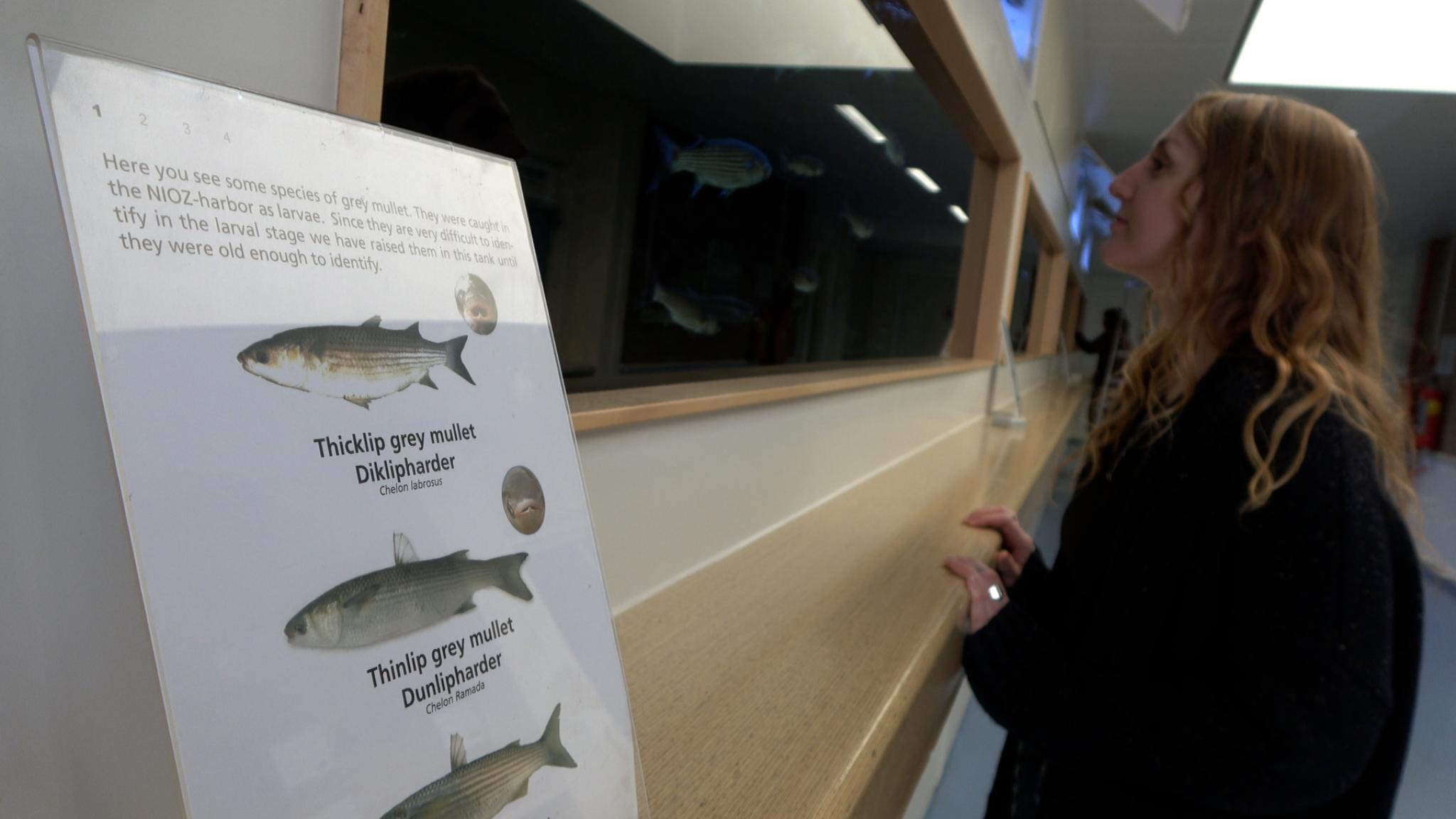Tagged fish reveal their lives in and outside the Wadden Sea

Jena Edwards, a marine biologist from Canada, conducted her PhD research at the Royal Netherlands Institute for Sea Research (NIOZ) on Texel. Her research into the use of the Wadden Sea by large fish is part of the Waddentools Swimway Wadden Sea project, which examines the role of the Wadden Sea in the lives of different fish groups.
Transmitter
Jena chose the thicklip mullet, thinlip mullet and sea bass to track. She did this by equipping the fish with a transmitter. “To track fish, we first had to catch them and insert a small electronic transmitter into their bodies”, Jena explains. “That transmits a unique audio signal that is picked up by receivers we attached to navigation buoys in the Wadden Sea. The signal is picked up when a fish is nearby. This allows us to track where the fish are in space and time.” To catch the fish, Jena made use of NIOZ's long-running research with fish fykes. She also joined sport fishermen and commercial fishermen.
Great journey
After transmitting, she received thousands of reports from receivers, inside and outside the Wadden Sea. “These species live in the Wadden Sea in summer and leave in winter, but we didn't know exactly where they were going”, she says. “Fortunately, a lot of similar research is being done along the Dutch coast and abroad. As a result, there are also receivers there that can pick up the signals from our tagged fish.” With the help of these other receivers, Edwards spotted many of the mullets in the North Sea near the Haringvliet. Some individuals migrated even further south, as far as off the Belgian coast. In summer, they migrated back to the Wadden Sea. Sea bass appear to make an even greater journey, also through the English Channel to wintering sites off the south coast of England.
Sea bass found to be site-loyal
Within the Wadden area itself, sea bass were found to use the entire Wadden Sea, from gullies to the mudflats. “But when we looked at individual fish, we saw that they used a relatively small core area”, says Jena. “Moreover, they returned to the same spot every year. So, they are very site-loyal, like we see with migratory birds. This behaviour is possibly linked to the distribution of benthic animals, such as shrimps and crabs. But when a fish returns to the same place every year, it makes them vulnerable to intensive local fishing, something that needs to be considered for effective management of this species.”
Mullet species in different locations
Among the mullets, an interesting difference between thinlip and thicklip mullet emerged. “Although the two species of mullet are very similar and eat the same food, their migration patterns are very different. Thicklip mullets were detected all over the area, but as individuals they used smaller areas. In doing so, they seemed to prefer areas closer to the North Sea and shallow parts of the Wadden Sea. Thinlip mullets, on the other hand, travelled long distances through the channels. They too showed a preference for certain areas: near the freshwater outlet of the Afsluitdijk. This difference shows that they probably use different habitats in the Wadden Sea, which we did not know before. This is another valuable insight for the management of the species.”